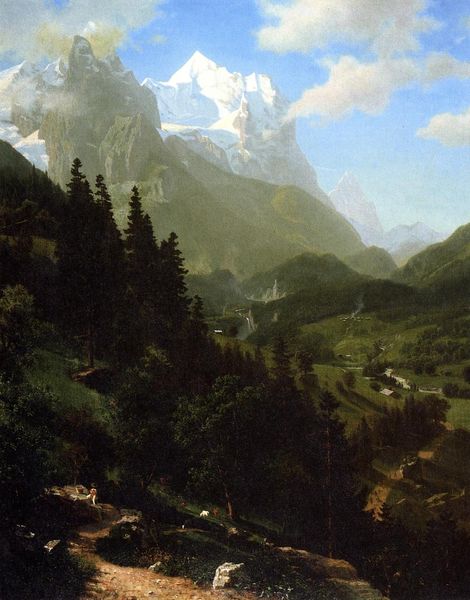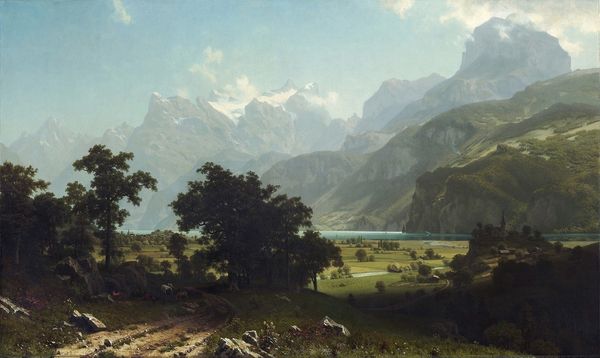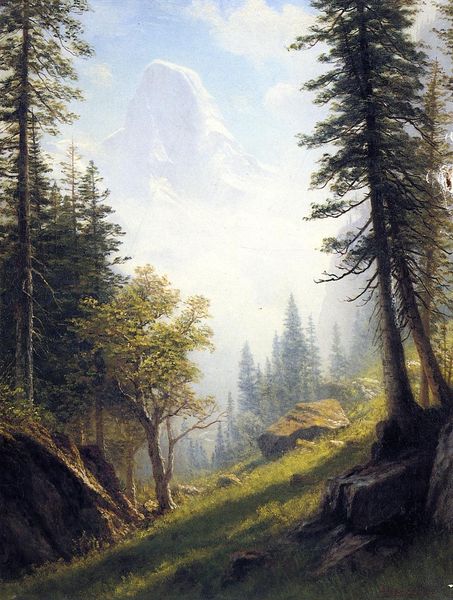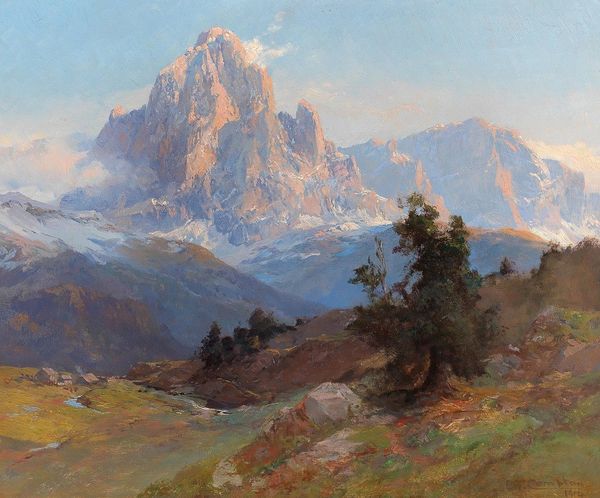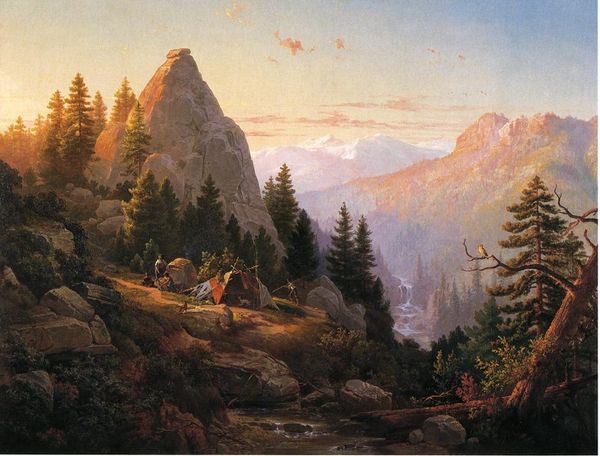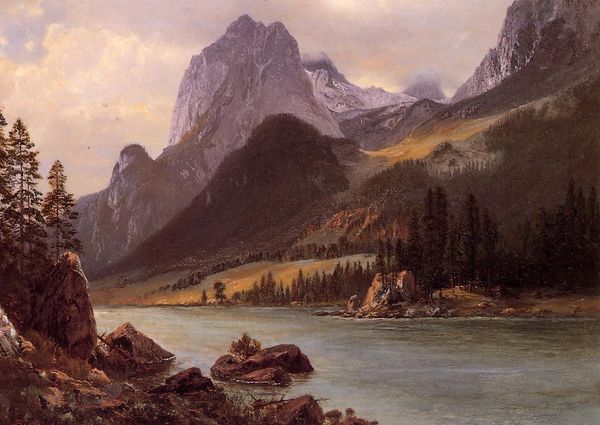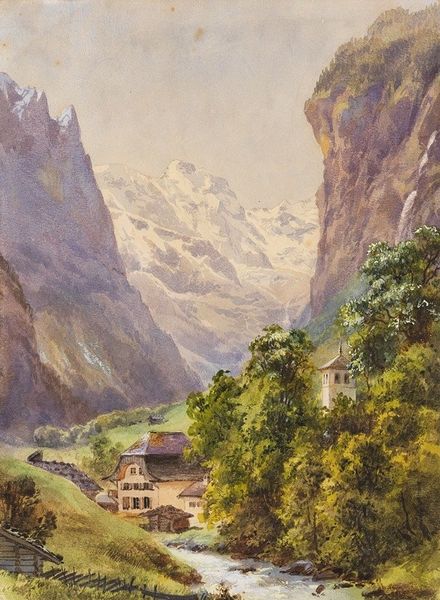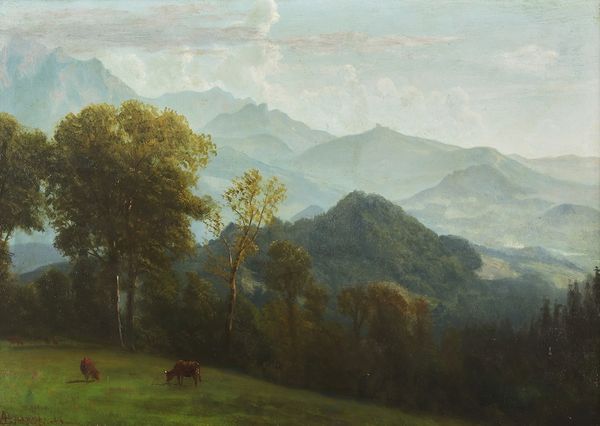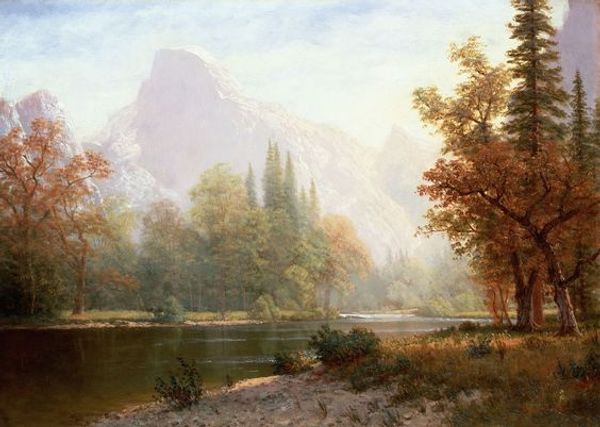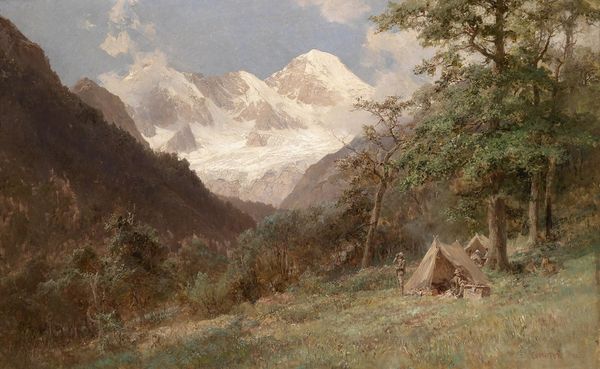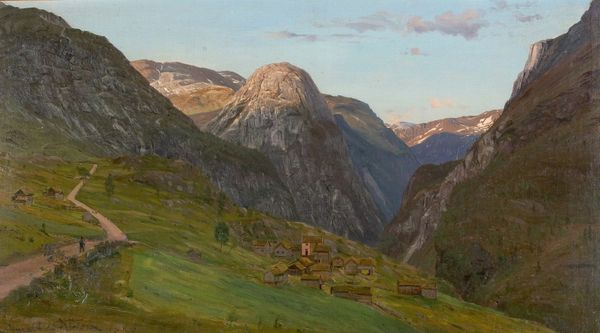
Dimensions: 34.92 x 49.53 cm
Copyright: Public domain
Albert Bierstadt painted ‘Tyrolean Landscape’ sometime in the mid-19th century, using oil on paper mounted on canvas. Bierstadt, a German-American painter, was a key figure in the Hudson River School, known for its romanticized depictions of the American West. This landscape, however, takes us to the Tyrolean Alps in Austria, but it still mirrors the romantic idealism of the Hudson River School. The towering mountains, rendered in soft, atmospheric hues, evoke a sense of awe. But there's a tension here. Bierstadt's landscapes, while seemingly celebrating nature, often served to promote the idea of manifest destiny, the belief that American expansion was both justified and inevitable. His work romanticizes the land, almost erasing the presence and histories of indigenous peoples. While this particular painting does not depict the American West it does show how the landscape genre participates in the politics of identity. How do these grand vistas affect our understanding of place and belonging?
Comments
No comments
Be the first to comment and join the conversation on the ultimate creative platform.
